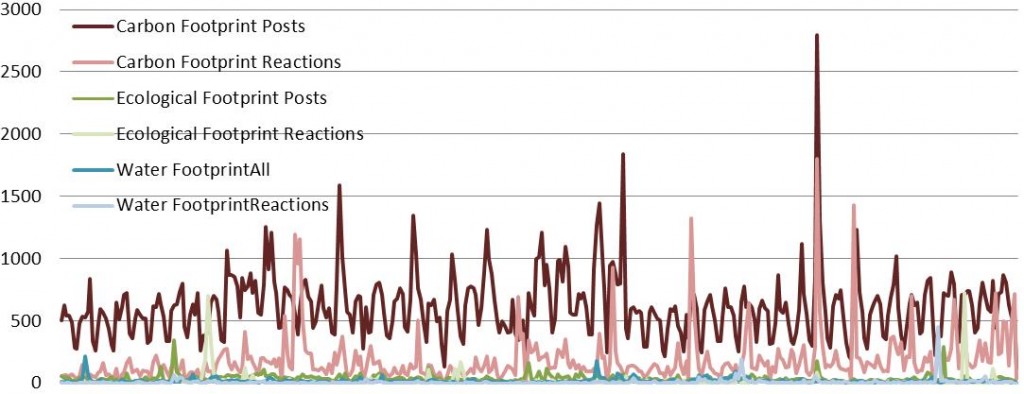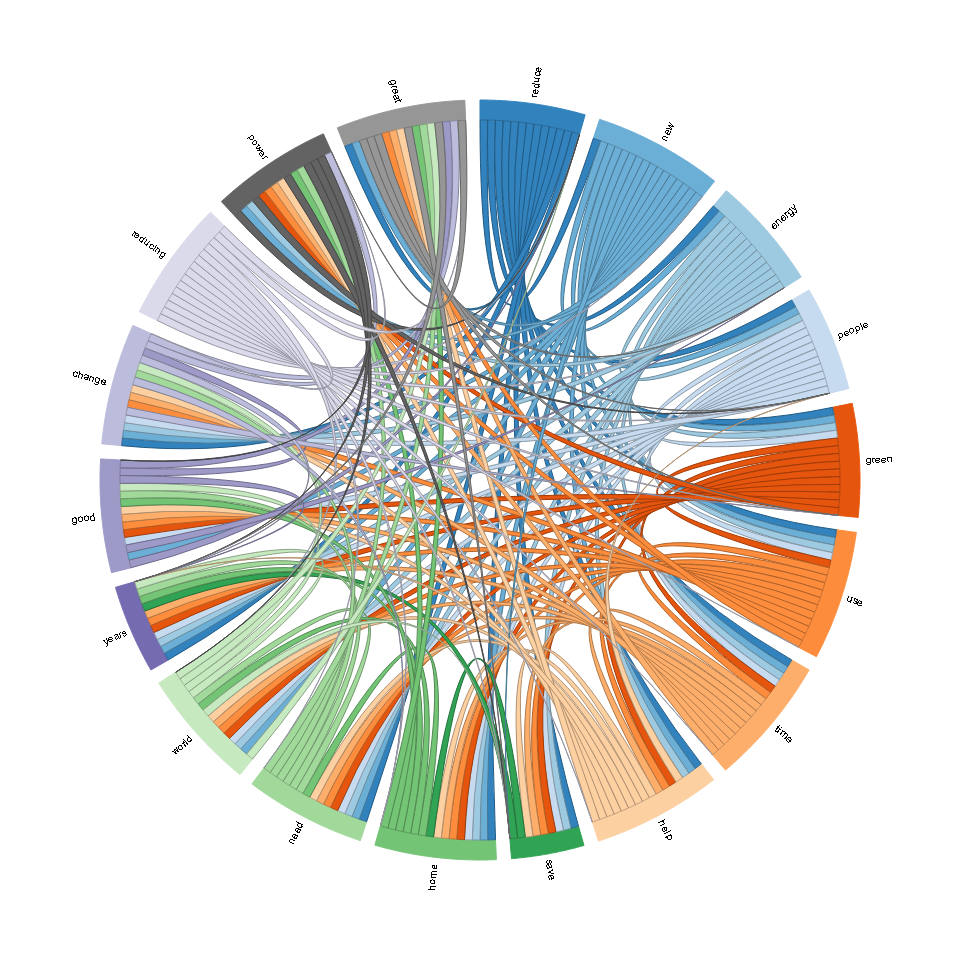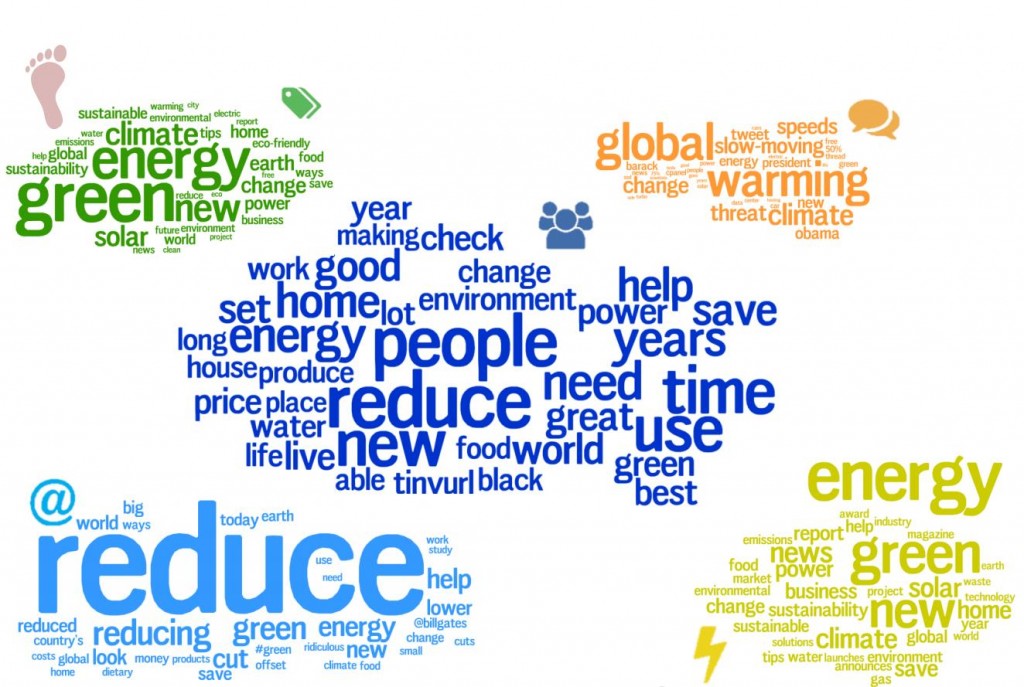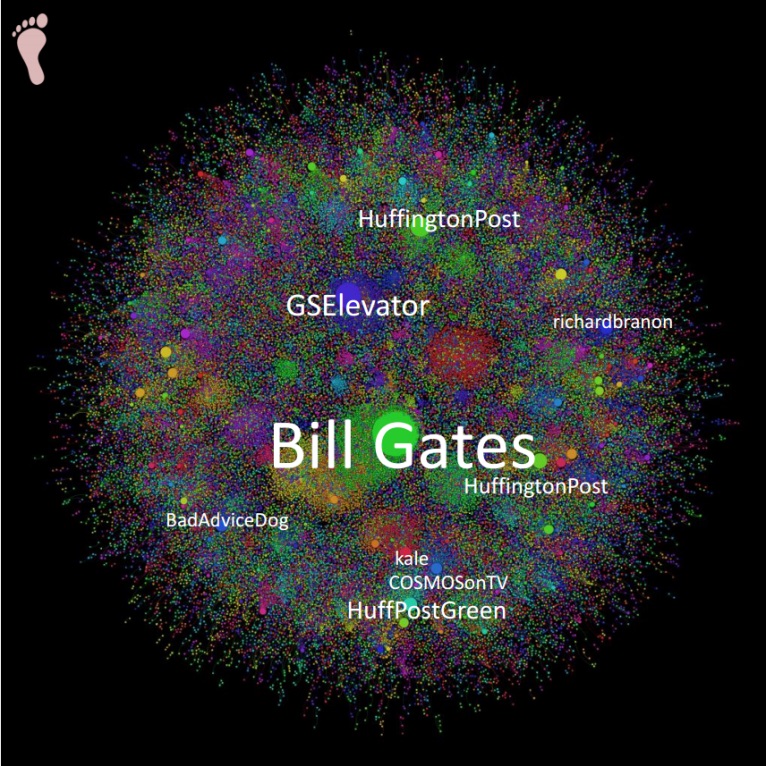Who’s talking about carbon footprints? Using Pulsar for environmental research
Brands and products are only a tiny part of the social media conversation. That's why social media research offers such enormous scope for wider research into public attitudes and behaviours - all human life is out there online!
In this blog post, Pulsar user Philipp Gassner shares how he's used the platform for his environmental research as a sustainability consultant. It's a great example of how social listening is essential if you want to understand and connect with people - be they publics, voters, audiences or customers.
Over to Philipp:
Finding this blog entry with the search engine of your choice produced about 7g of CO2 - around as much as running a lamp for an hour. Likewise, every other move in our carbon-fueled world will leave a footprint - a carbon footprint. Or a water footprint, like the 140 litres of water hidden in producing the steaming coffee next to me. Or your ecological footprint, which would be close to 4.7 global hectares if you’re living in the UK. If you consider that our planet has a capacity of mere 1.3 ha per person, this gets interesting.
As an environmental scientist it’s these questions that keep me busy. Overconsuming mankind meets limited planet. Doesn’t sound like a love story, does it? However, what gets me out of bed in the morning - my 140 L coffee aside - is not the nitty-gritty details of how we wreck the planet, but what we can do about it. And that’s where my passion as interface expert and international consultant comes in: translating between the different languages of scientists, politicians, business and your everyday Joe.
In particular, I was curious what everyday Joes think about fancy sustainability concepts like footprints. After all, carbon number crunching aside, they are intended as tools to make sense of sustainability: calculate your footprint, be flabbergasted, change your behaviour, save the planet. Easy as that. Or is it? Hence, in my Master’s thesis at the University of Freiburg, I asked ‘Are Sustainability Concepts Useful (Knowledge)?’
But how on earth would you figure that out, and what’s ‘useful’ in the first place? Ask (social) scientists and they’d enlighten you to do a bunch of expert interviews or look at dusty books and papers, to analyse the discourse out of them. Didn’t sound convincing. But wasn’t there this new cool thing? Big data? Big social data? And if you could analyse worldshaking wonders like the Harlem Shake and Gangnam Style, why not also "footprint shake" and "sustainability style"?
A quick research and a nice chat later, I had a much more convincing answer from the Pulsar guys. With the help of their social media monitoring tool I’d be able to look at what people really think about footprint indicators.
Shortly after I started mapping some 350.000 mentions in New Media channels over 1 year:
[caption id="" align="alignnone" width="824"] Daily volumes of social media discussion about ecological footprints[/caption]
Daily volumes of social media discussion about ecological footprints[/caption]
My goal was to find out whether footprint indicators are…
- socially legitimate: Do people accept the concept, talk about it and do so positively? Who are these people in the first place? And who tells and influences whom?
- communicated close to its intended (ii) context and are thus (ii) usable: Do people understand the concept as a visualization of overconsumption, offering solutions?
- (iv) practically relevant. Does the concept pave the way to the reduction of environmental footprints?
[caption id="attachment_964" align="aligncenter" width="560"] Semantic connections between the Carbon Footprint keywords; size of connecting lines: volume of connected keywords[/caption]
Semantic connections between the Carbon Footprint keywords; size of connecting lines: volume of connected keywords[/caption]
In a nutshell, this unique attempt to combine a data driven marketing tool with an old fashioned social science framework proved to be quite useful to drill down on environmental challenges.
[caption id="attachment_903" align="aligncenter" width="724"] Wordcloud of Carbon Footprint keywords by channel, size, volume, color: micro blogs (light blue), social media (blue), forums (orange), news (yellow), blogs (green)[/caption]
Wordcloud of Carbon Footprint keywords by channel, size, volume, color: micro blogs (light blue), social media (blue), forums (orange), news (yellow), blogs (green)[/caption]
[caption id="" align="alignnone" width="566"] Social network visualisation of 'carbon footprint' with influencers; color: modularity class; bubble size: visibility[/caption]
Social network visualisation of 'carbon footprint' with influencers; color: modularity class; bubble size: visibility[/caption]
Interactive World map of mentions by volume by country of the Footprint Family
More details can be found in an interactive infographic and soon in the scientific publication of the study.
I’d like to thank the Pulsar team for their great support and remain curious to see such tools used creatively also beyond the realm of marketing, bringing us closer to useful knowledge.
By Philipp Gassner
- GreenChallengeAccepted.org
- Linkedin.com/in/PhilippGassner
- Twitter: @GrnChllngAccptd
- Facebook: GreenFoTainment
*
We've also used Pulsar for sustainability research ourselves, in projects for Akzo Nobel and Telefonica - and carried out public attitudes research with the University of Sheffield / Visual Social Media Lab, looking at responses to Margaret Thatcher's death.
If you'd like to learn more, email our research lead Jess Owens: Jessica@PulsarPlatform.com to get a case study.
Meanwhile thank you Philipp for the fantastic visualisations in this post! The network visualsiation is using Pulsar's Gephi export feature, which will be the subject of a forthcoming blog post...



